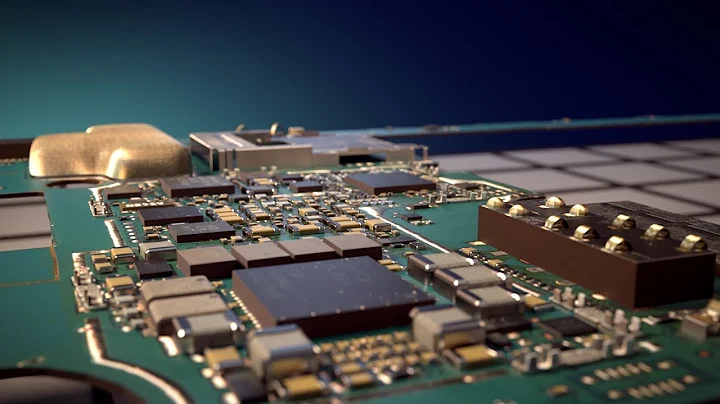Characteristics of the camera phone industry
After nearly 20 years of development in mobile phone camera technology, especially the explosive technological breakthroughs in recent years, major mobile phone manufacturers have now achieved different levels of technology accumulation and developed unique products. Photography system. Based on the camera technology strength of today's mainstream mobile phone manufacturers, it can be roughly divided into four echelons:
Chart: Characteristics of the camera phone industry

Edit switch to centered
Add picture annotation, no more than 140 words (optional)
Source: Zhiyan The Institute of Research and Industry compiled a brief history of the development of the camera phone industry
Development history
Early stage of development:
The world's first mobile phone with a built-in camera was the J-SH04 launched by Sharp in 2000, with a built-in 100,000-pixel and 256-color screen. However, due to the closed nature of Japan's communications market, this phone did not cause any repercussions.
The first generation of camera phones, mainly Nokia 7650 and Sony Ericsson T68i, hit the market.
Subsequently, camera phones entered the development stage. Sony Ericsson K750i is a mobile phone that not only has a 2-megapixel sensor, but also integrates an autofocus system and a xenon flash, making the mobile phone photography experience close to that of a digital camera.
In 2007, models represented by the Nokia N95 not only had a built-in 5-megapixel autofocus camera, but also supported 3.5G networks and GPS, and the prototype of a smart camera phone was born.
During this period, Samsung , LG and other Korean companies also made some attempts. For example, Samsung was the first to transplant digital camera sensors and lenses into mobile phones, allowing mobile phones to have higher pixels and optical zoom capabilities, and video shooting. The resolution also increases with the performance of mobile phone processors.
Generally speaking, the early development of camera phones was actually in sync with the evolution of the entire mobile phone industry. Not only the camera, but also other parts such as screens and processors were evolving.
Second revolution:
The second revolution of camera phones can be traced back to Apple launched iPhone4. This 5-megapixel smartphone not only achieves shooting effects through the iSight sensor, but also benefits from the explosion of iOS platform applications. With rapid growth, shooting and sharing applications have exploded, allowing users to develop the habit of shooting and posting at will. It has also driven Android platforms, such as the Samsung Galaxy S series.
In the same period, Nokia also launched the N8 with 12 million pixels. However, due to the lag of the Symbian system, it did not gain recognition from users. The later Nokia 808 PureView with 41 million pixels also received a cold reception. This shows the user experience and application of the system platform.
In 2013, HTC One focused on the concept of "UltraPixel" large pixel area, sacrificing pixels for the amount of light to achieve low-light shooting effects, but the lower pixels (4 million) were difficult for some users to accept. Apple's iPhone 5s also uses the same concept, but the iPhone 5s increases the sensor size but keeps the pixels unchanged, and the photo effect is more outstanding than the previous one. The Nokia Lumia 1020 has transplanted the 808PureView 41-megapixel sensor, which can still achieve the "lossless zoom" effect. At the same time, the WindowsPhone platform has excellent shooting experience and software applications compared to Symbian.
Samsung directly transplanted the 1/2.3-inch 16-megapixel sensor and 10x optical zoom lens of the digital camera to GalaxyS4Zoom. In fact, the product concept is the same as the previous feature phone. In addition to improving the image quality, the Android system also brings application capabilities. But size and power consumption are still an issue. Sony focuses on the integration concept, integrating Sony Imaging's "G" lens and BIONZ image processing engine into the Xperia Z1 mobile phone, with a 20-megapixel large-size sensor for image quality performance.
Domestic mobile phone manufacturers have also launched different types of camera phones.Take OPPO as an example. The OPPO N1 it launched creatively combined the front and rear cameras into one, and designed a "206-degree free stop-and-rotate camera". The camera is a 13-megapixel Sony stack camera. It is convenient for users. Multi-angle shooting and framing can obtain framing within various effective viewing angles.
Generally speaking, the distribution of smart platforms has almost been finalized after 2013. The improvement of mobile phone camera technology can be summarized as the diversification of image sensors and the advancement of image processing engines, and the quality of lenses has also been slightly improved.
Market Size and Growth Rate
Statistics show that in 2016, the market size of China's camera phone industry was 3,146.841 billion yuan, and in 2020, the market size of China's camera phone industry was 3,133.038 billion yuan. The market size of China's camera phone industry from 2016 to 2021 is as follows:
Chart: The market size of China's camera phone industry from 2016 to 2021

Edit switch to center
Add picture annotation, no more than 140 words (optional)
Data source: Zhi Yanzhan Institute of Research and Industry compiled the development prospects of
camera phones
More powerful video shooting functions
Smartphones have made rapid progress in taking pictures, and the image quality of many flagship phones is close to professional grade. After photo shooting matured, video shooting became the next point to break through. Currently, Vlogs and short videos have become a hot topic and have huge market potential, and the convenience and networkability of smart camera phones are naturally related to them. Therefore, for many mobile phone manufacturers, higher-definition, optimized, and intelligent video shooting will be a general direction.
Active users in the short video industry continue to grow, and video information has become a new form widely accepted by users. The number of monthly active users exceeds 800 million, followed by a larger number of growth points for the creation of video works.
Videos are a richer form of recording than photos. The popularity of Vlogs and short videos has increased users’ ability requirements for mobile video shooting; the number of Vlog/video creation users continues to grow. As of March 2020, the number of industry users has exceeded 100 million. , users’ demand for mobile phone video shooting will usher in growth.
Currently, various manufacturers have launched 4K resolution video formats, which have been improved in many aspects such as anti-shake, image quality, frame rate , etc. As the 5G era brings higher bandwidth, higher frame rates will be achieved. High-quality video is also the next breakthrough in mobile phone photography.
More powerful image processing algorithm and chip
The connotation and extension of the image processing algorithm are getting wider and wider, and it is not just limited to RAW image conversion. In the future, image processing algorithms will be deeply involved in image generation, detail processing, targeted local optimization, image attribute optimization and other aspects, and will be deeply integrated with image processing chips to fully tap the potential of the lens and greatly improve photography performance. The single-camera imaging of Google's PIXEL series and Apple's seamless zoom, stable white balance, etc. are all manifestations of powerful algorithms optimized to the smallest detail. The blessing of the algorithm is engine oil that reconciles powerful hardware. More powerful AI algorithms can maximize the strength of the hardware, further improve the details of the photo experience and imaging effects, and meet the needs of users.
More varied gameplay and AR technology
With the widespread use of multiple cameras, mobile phones can obtain more levels and richer image information. By integrating this information, dark light photography, backlight photography, beauty, and portraits can be further improved. Lighting, HDR (high dynamic range) and other functions; in addition, AI technology will also be integrated with other technologies to create more fun shooting functions; such as Apple’s AR application and Animoji, and Xiaomi’s launched Magic Sky Changer and Magic Avatar, Huawei proposes passerby removal, AI instant, etc., which greatly enriches the gameplay of camera phones. More facial AR interaction and somatosensory interaction will likely be the main direction in the future.
It can be seen from the financial report of optical manufacturer Sunny Optical that "the advent of the 5G era has further promoted the development of 3D sensing, and smartphone brand manufacturers have particularly strong demand for TOF technology." Currently, Honor 30 series, Apple iPad Pro, Meizu 17 series, etc. are already equipped with TOF or lidar sensors. On the basis of traditional optimized focusing, TOF and more advanced sensors should be used for 3D sensing and AR applications in the 5G era. Service
Zhiyanzhan Industry Research Institute focuses on China's industrial economic intelligence and research. The current main products and services provided include traditional and emerging industry research, business plans, feasibility studies, market research, special reports, customized reports, etc. Covering culture and sports, logistics and tourism, health care, biomedicine , energy and chemical industry, equipment manufacturing, automotive electronics, agriculture, forestry, animal husbandry and fishery, etc., it also conducts in-depth research on smart cities, smart life, smart manufacturing, new energy, new materials, and new consumption. , new finance, artificial intelligence , " Internet + " and other emerging fields.
What is the market prospect of the camera phone industry? The "2022-2028 China Camera Phone Industry Analysis Report - Research on Market Supply and Demand Current Situation and Development Trends" released by Zhiyanzhan Industry Research Institute provides a detailed analysis of the relevant definitions of the camera phone industry, the current market development status of the global camera phone industry, and the development of China's camera phone industry. environment, China's camera phone industry operation status, China's camera phone industry operation data monitoring, China's camera phone market structure, China's camera phone industry demand characteristics and trends, China's camera phone industry regional market status, China's camera phone industry competition, China's camera phone industry Analysis and forecast of the development prospects of the mobile phone industry, development strategies and investment suggestions for the Chinese camera phone industry, etc., to help companies and investors understand the market investment value of the camera phone industry. If you want to have a systematic understanding of the camera phone industry or want to invest in the camera phone industry, this report is an indispensable and important tool for you.





















